So I have been agonizing over a misfire for at least a year, and an intermittent condition where it seemed like the engine was running on maybe 4 cylinders and would hardly have enough power to pull away from a stop light :-( Once I could get the revs up over 2000 it would usually smooth out. but not always.
My independent mechanic about a year ago and not many miles (~200) replaced plugs/wires/rotors/insulators/dist caps and still same condition.
I checked the blink codes for the EZL pin 17 and only had a code 8 (Transmission Overload Protection). I cleared that.
Last thing was to replace the ignition coils myself, and boy did I get a surprise!! The coil and wire for the passenger side bank is rusted and coated in the green death gunk!!! The other one is perfect. This car is in dry California and really has not even seen rain over the last year... Not sure what could cause this mess.


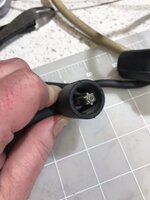
The last pic is of the old coil wire which I kept (I usually ask for the old parts when I get work done)... would it be silly to use the old coil wire, as it has no noticeable corrosion?
Or does anyone happen to have an extra new coil wire for sale? I checked Pelican and AutoHauz just now and they don't sell just the coil wires :-(
Lastly, those 10mm bolts and nuts holding the coils on are pure evil!!! I did remove the headlight as suggested by the wisdom on this forum and it was definitely worth it... Of course that plastic stop thing on top that you have to twist counter clockwise disintegrated but I see they are readily available
Tom
My independent mechanic about a year ago and not many miles (~200) replaced plugs/wires/rotors/insulators/dist caps and still same condition.
I checked the blink codes for the EZL pin 17 and only had a code 8 (Transmission Overload Protection). I cleared that.
Last thing was to replace the ignition coils myself, and boy did I get a surprise!! The coil and wire for the passenger side bank is rusted and coated in the green death gunk!!! The other one is perfect. This car is in dry California and really has not even seen rain over the last year... Not sure what could cause this mess.



The last pic is of the old coil wire which I kept (I usually ask for the old parts when I get work done)... would it be silly to use the old coil wire, as it has no noticeable corrosion?
Or does anyone happen to have an extra new coil wire for sale? I checked Pelican and AutoHauz just now and they don't sell just the coil wires :-(
Lastly, those 10mm bolts and nuts holding the coils on are pure evil!!! I did remove the headlight as suggested by the wisdom on this forum and it was definitely worth it... Of course that plastic stop thing on top that you have to twist counter clockwise disintegrated but I see they are readily available
Tom





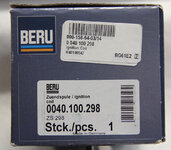



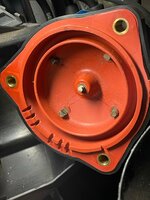
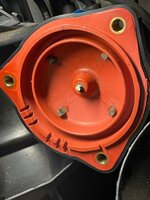
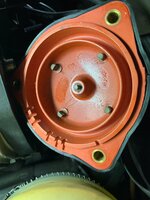
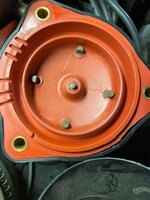


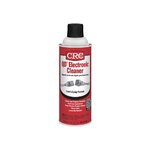



 Wow!, or a
Wow!, or a Wow!?
Wow!?  or
or  ?
?